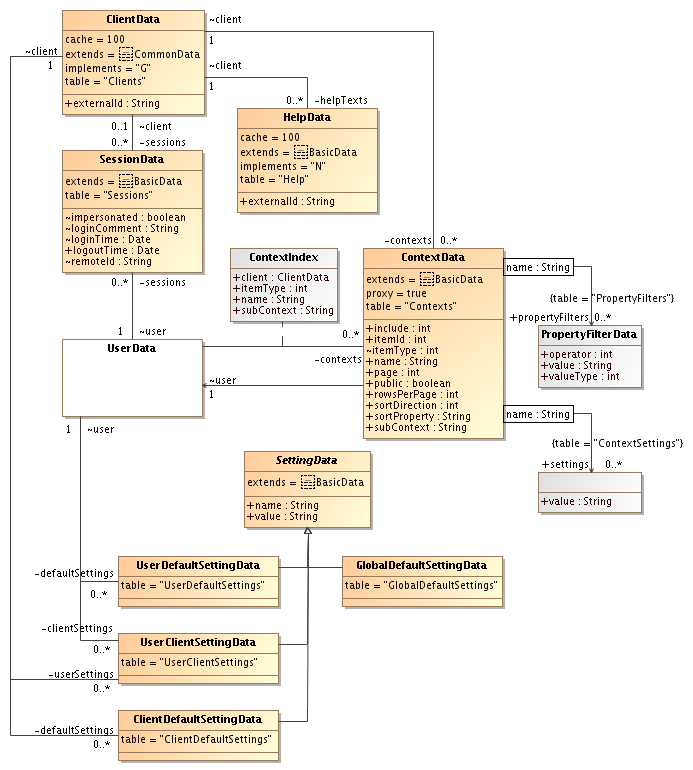This section gives an overview of hardware and software in BASE.
The ClientDatanet.sf.basedb.clients.web is the ID for the
web client application.
A client application doesn't have to be registered with BASE to be able to use it. But we recommend it since:
The permission system allows an admin to specify exactly which users that may use a specific application.
The application can't store any context-sensitive or application-specific settings unless it is registered.
The application can store context-sensitive help in the BASE database.
A session represents the time between login and logout for a single
user. The SessionData
There are two types of settings: context-sensitive settings and regular settings. The regular settings are simple key-value pairs of strings and can be used for almost anything. There are four subtypes:
Global default settings: Settings that are used by all users and client applications on the BASE server. These settings are read-only except for administrators. BASE has not yet defined any settings of this type.
User default settings: Settings that are valid for a single user for any client application. BASE has not yet defined any settings of this type.
Client default settings: Settings that are valid for all users using a specific client application. Each client application is responsible for defining it's own settings. Settings are read-only except for administrators.
User client settings: Settings that are valid for a single user using a specific client application. Each client application is responsible for defining it's own settings.
The context-sensitive settings are designed to hold information about the current status of options related to the listing of items of a specific type. This includes:
Context-sensitive settings are only accessible if a client application has been registered. The settings may be named to make it possible to store several presets and to quickly switch between them. In any case, BASE maintains a current default setting with an empty name. An administrator may mark a named setting as public to allow other users to use it.
